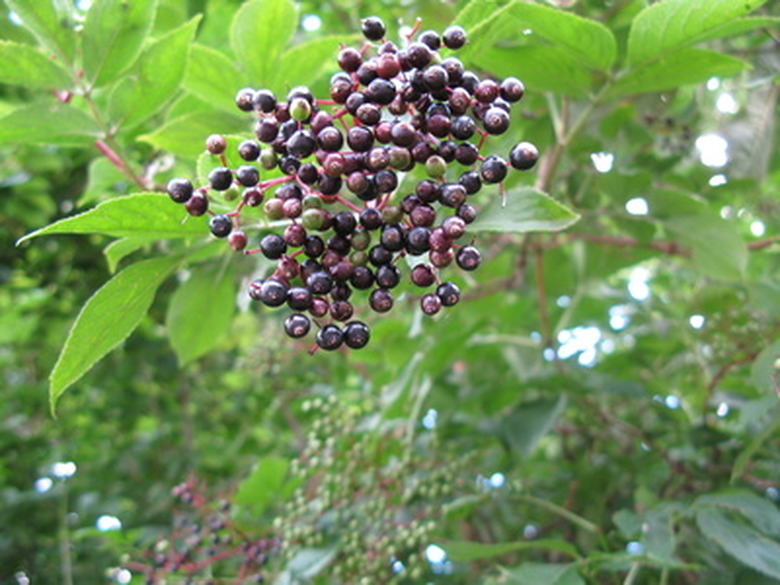What Shrubs Do I Plant In A Flood Plain?
The silt and organic matter brought by the river makes the soil of a flood plain fertile and easy to garden in. A few weeks of spring floods, though, can discourage most shrubs from growing. Look for shrubs tolerant of wet soil, and also check out plants recommended for "rain gardens," areas created to absorb surface runoff.
Red-Stem Dogwood
The red-stem dogwood, Cornus stolonifera, is native to northern and western North America and usually grows along stream edges. It is tolerant of both wet soil and average moisture. The dark red bark of the new growth and the small yellow flowers are followed by ornamental white berries. Red-stem dogwood will grow 12 feet tall or more and spreads by underground stems to make a dense thicket of growth, though it is easily kept smaller by pruning in early spring.
- The silt and organic matter brought by the river makes the soil of a flood plain fertile and easy to garden in.
- Red-stem dogwood will grow 12 feet tall or more and spreads by underground stems to make a dense thicket of growth, though it is easily kept smaller by pruning in early spring.
Shrub Willows
Several small willows make excellent shrubs for intermittently wet areas. Try pussy willows, Salix caprea and S. discolor. They will eventually grow to 20 feet in height, but they may be kept lower by cutting to the ground every two or three years. The inch-long catkins of the male plants in early spring are their major ornamental attraction.
The blue arctic willow, S. purpurea, is a lovely delicate shrub with small bluish leaves. It is also called purple osier and Alaska blue willow. The species will grow to 10 feet in height, but a dwarf variety is available that stays 3 to 4 feet high.
- Several small willows make excellent shrubs for intermittently wet areas.
- The blue arctic willow, S. purpurea, is a lovely delicate shrub with small bluish leaves.
Elderberry
The American elderberry, Sambucus canadensis, is a medium-sized shrub 6 to 8 feet high with large, almost tropical-looking leaves. The wide clusters of white flowers in spring are followed by blue-black fruit that is edible and often used for making pies, jams and jellies.
The red elderberry, S. racemosa, is similar but slightly larger, growing 8 to 10 feet high. The red fruit is usually considered to be inedible, though some people claim otherwise.
Leucothoe
The Sierra laurel, Leucothoe davisiae, is an upright small shrub with white bell-like flowers similar to those of heather that grows about 3 1/2 feet high. The leaves are glossy and somewhat leathery.
The drooping Leucothoe, L. fontanesiana, has similar leaves and flowers but is more arching and grows 3 to 4 feet high. There are a number of named varieties available with attractively variegated foliage or more reddish leaves.
- The American elderberry, Sambucus canadensis, is a medium-sized shrub 6 to 8 feet high with large, almost tropical-looking leaves.
- The drooping Leucothoe, L. fontanesiana, has similar leaves and flowers but is more arching and grows 3 to 4 feet high.
Both these species prefer partial to full shade and acid, loose soil.
Summersweet
Summersweet, Clethra alnifolia, also prefers acid soil and partial shade but has the advantage of bearing spikes of small fragrant flowers in mid to late summer. You'll find some varieties with pale pink flowers and others with white. The leaves turn an attractive yellow in fall. The plants grow 4 to 6 feet tall, though those given shade and considerable moisture may reach 10 feet. Summersweet can spread by underground stems into clumps of considerable size.
References
- University of Rhode Island: Healthy Landscapes: Rain Gardens
- Iowa State University Extension: Trees And Shrubs For Wet Soil
- "The Sunset National Garden Book"; Editors of Sunset Books and Sunset Magazine; 1997
